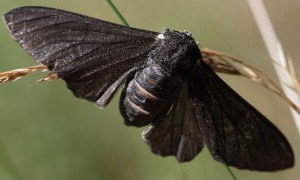FRIDAY, 6 MAY 2011
The peppered moth (Biston betularia) typically has light, speckled colouring, which provides good camouflage in its natural habitat. During the 19th century rising levels of pollution caused black soot deposits on trees, and in response to the changing environment a novel, dark ‘melanic’ form of the moth appeared. Evolutionary biologists have long been interested in this example of natural selection, and the ecology and population genetics of the peppered moth has been studied in detail. However, surprisingly little is known about the genetic basis of melanism in B. betularia.Ilik Saccheri at the University of Liverpool and his colleagues used linkage mapping to pinpoint a candidate region of the Biston genome Science 14 April. DOI: 10.1126/science.1203043' target='_blank' rel='noopener noreferrer'>[1]. They sampled a large number of moths, collected from 78 different sites over a period of 84 years, and without exception the gene region, or 'locus', they identified was associated with melanism in each moth tested. Their analysis further suggested that a single mutation causing melanism spread rapidly through British peppered moth populations.
The actual genes that control the switch to the melanic form remain to be identified and are the focus of future studies. Interestingly, the genomic region identified by Saccheri is known to contain pigmentation and patterning genes important to other species of butterfly and moth.
Written by Emma Hatton-Ellis

